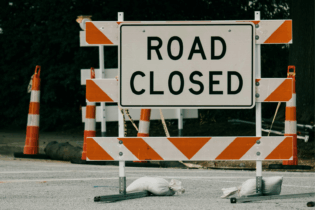Roads and railways are the lifeblood of a nation’s transportation network, facilitating the movement of people and goods, fostering economic growth, and connecting communities. However, these vital networks often find themselves at the mercy of environmental elements like moisture, salt, and stray electrical currents, which can accelerate the onset of corrosion. This corrosion, in turn, jeopardises safety, performance, and the overall durability of road and rail infrastructure. The repercussions are far-reaching, encompassing increased maintenance expenditures, a reduced operational lifespan, and the potential for accidents.
In response to this challenge, experts have highlighted zinc as an efficacious and cost-effective solution for protecting steel structures in road and rail infrastructure. Simon Norton, the Executive Director of the International Zinc Association (IZA) Africa, highlights the role of zinc as a protective coating material for steel. This versatile metal boasts properties that make it an ideal choice for corrosion protection. One of zinc’s remarkable attributes is its capacity to form a protective layer on the steel surface, functioning as a robust barrier against corrosive agents. This protective layer, known as a zinc patina, consists of zinc oxide, zinc hydroxide, and zinc carbonate. Notably, the zinc patina possesses self-healing properties, capable of autonomously repairing damage caused by scratches or abrasion. Furthermore, zinc offers cathodic protection for steel, signifying that it sacrifices itself to preserve the underlying steel. As a more reactive material than steel, zinc corrodes preferentially when exposed to an electrolyte, like water, effectively shielding the steel from corrosion even if the zinc coating is compromised. Additionally, zinc is a sustainable material that can be reclaimed from steel products at the end of their life cycle, contributing to energy conservation, reduced greenhouse gas emissions, and the conservation of natural resources.The applications of zinc in safeguarding road and rail infrastructure are diverse and encompass the following:
- Galvanizing: This process involves coating steel with a thin layer of zinc through immersion in molten zinc. Galvanized steel exhibits remarkable resistance to corrosion and can endure for decades in most environments.
- Zinoco: A specialized rail coating developed by British Steel, Zinoco combines cathodic protection with a durable metallic alloy. It excels in challenging environments, such as coastal areas, wet tunnels, level crossings, and areas susceptible to stray electrical currents. Notably, Zinoco is more resistant to damage from impacts and abrasions compared to traditional rail coatings.
- Zinc-Rich Paint: This paint type, containing a high concentration of zinc particles in a binder, offers both barrier and cathodic protection for steel. It can be applied via spraying or brushing onto steel surfaces, further enhancing the durability and corrosion resistance of structures.








